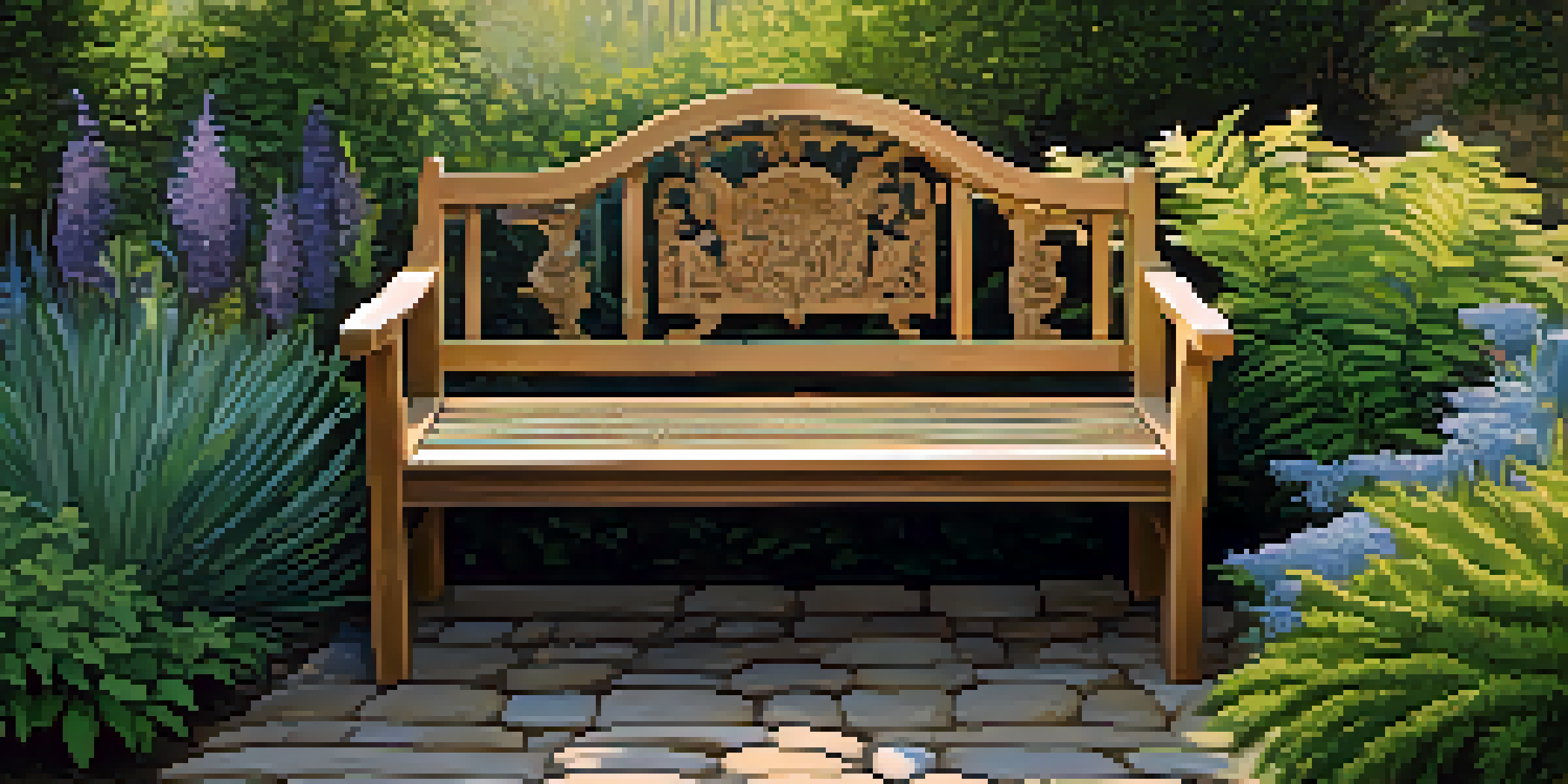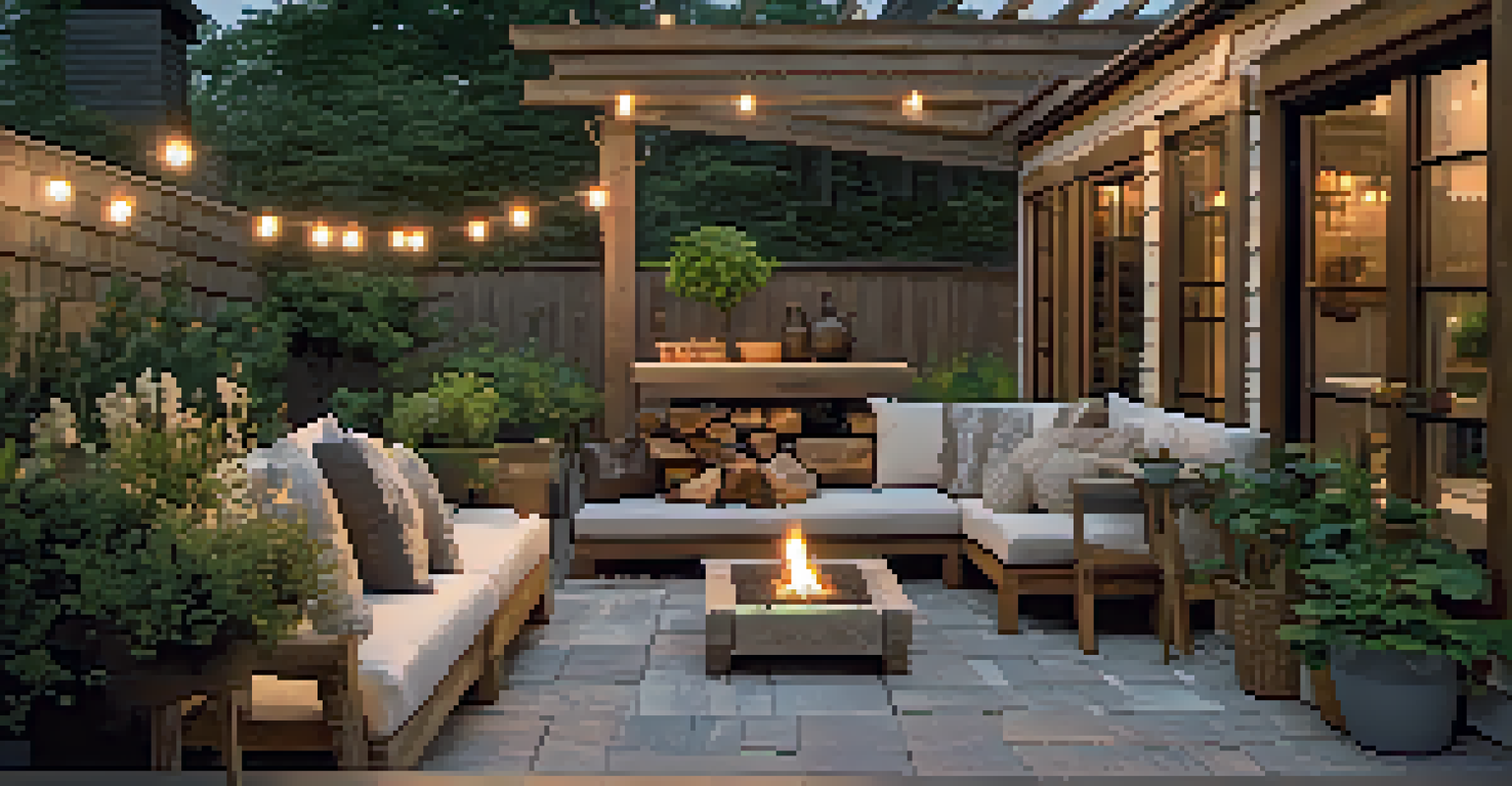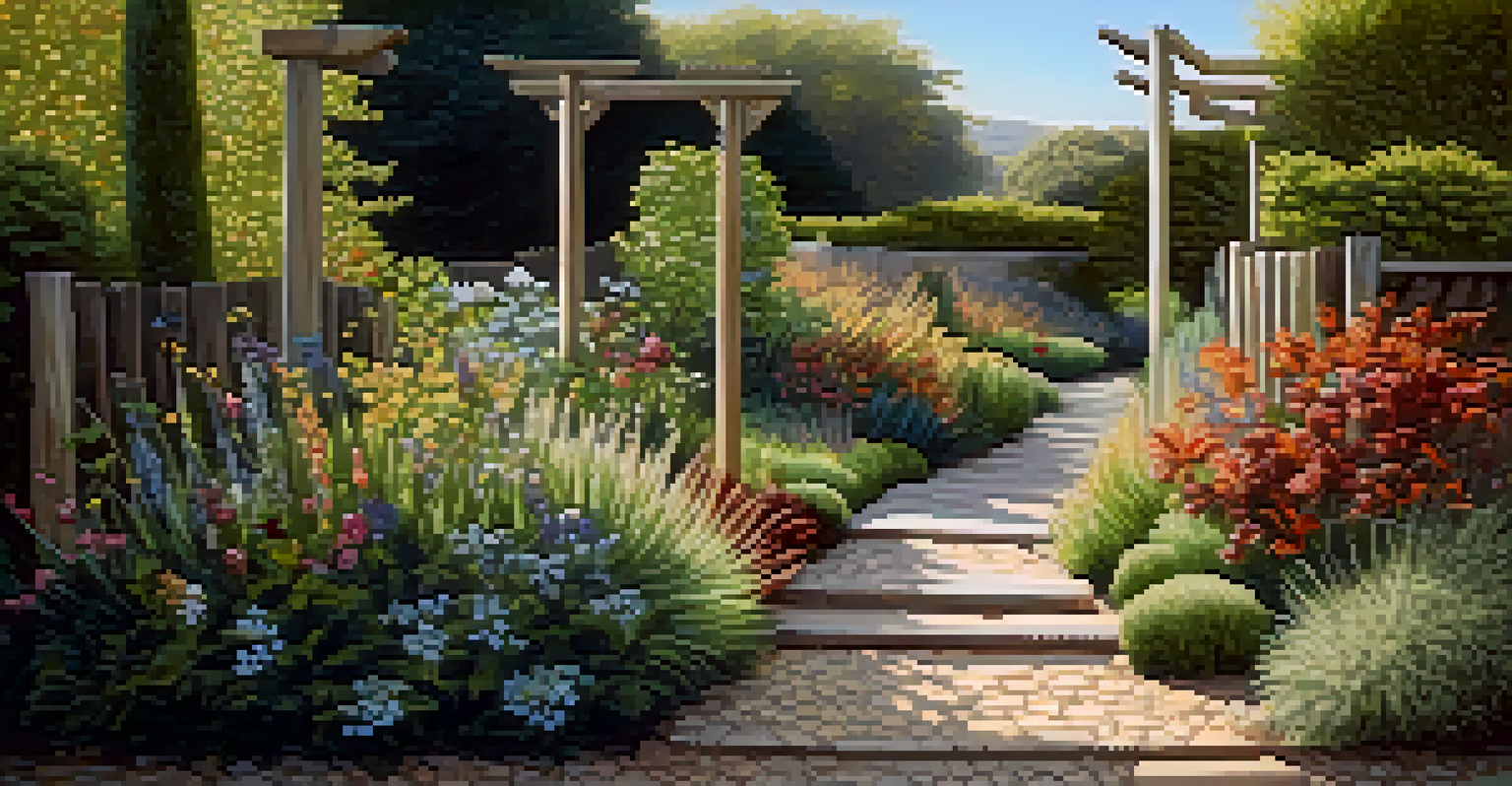Incorporating Local Materials in Outdoor Designs

Understanding the Value of Local Materials
Local materials are not just about aesthetics; they carry the essence of the region. Using materials sourced from the local environment helps create designs that resonate with the culture and history of the area. For instance, a stone patio made from nearby quarry stones feels more connected to its surroundings than imported tiles.
The best way to predict the future is to create it.
Incorporating local materials also supports the local economy. When you choose to source materials from nearby suppliers, you contribute to the livelihoods of local artisans and businesses. This not only fosters community relationships but also often results in unique designs that reflect local craftsmanship.
Moreover, local materials can enhance sustainability efforts. They typically have a lower carbon footprint compared to materials transported from far away, and they often blend seamlessly with the natural environment. This approach not only promotes eco-friendliness but also ensures that your outdoor space harmonizes with its surroundings.
Choosing the Right Local Materials
Choosing the right local materials involves understanding the characteristics of what's available in your area. For example, if you live near a region rich in clay, consider using it for natural pottery or sculptures that can enhance your garden. Each material has its own unique properties that can complement your outdoor design.

It's crucial to consider the climate and how local materials will hold up over time. Some woods, for example, may be more resistant to rot and pests in certain climates, making them ideal for decking or fencing. Researching the longevity and maintenance requirements of local materials can save you time and money in the long run.
Support Local Economies
Sourcing materials locally not only enhances the uniqueness of designs but also boosts the livelihoods of local artisans and businesses.
Additionally, look for materials that reflect the local architectural style. For example, if your home is built in a rustic style, local timber or stone can provide a cohesive look. This attention to detail helps create a seamless transition between your home and outdoor spaces.
Incorporating Natural Textures and Colors
One of the joys of using local materials is the natural textures and colors they bring to your outdoor design. For instance, locally sourced wood often showcases unique grains and hues that can add warmth and character to your space. Incorporating these elements can make your outdoor area feel inviting and personalized.
Sustainability is no longer about doing less harm. It's about doing more good.
Think about how these textures and colors can influence the overall atmosphere of your outdoor space. A soft, sandy path made from local gravel can create a relaxed vibe, while a sleek, polished stone patio might lend a more modern feel. Balancing different textures and colors can enhance the visual interest of your design.
Additionally, using local flora can tie in beautifully with the materials you've chosen. Plants that thrive in your region not only complement the materials but also ensure that your outdoor space remains vibrant and healthy. This creates a cohesive look that celebrates the beauty of your environment.
Exploring Local Craftsmanship
Local craftsmanship can elevate your outdoor design in ways that mass-produced items simply can't. By working with local artisans, you can incorporate unique, handcrafted elements that tell a story. For example, a beautifully carved wooden bench can serve as a functional piece of art, enhancing the overall aesthetic of your outdoor space.
Collaborating with local craftsmen also allows for customization. You can work together to create pieces that fit your specific design vision, ensuring that every element feels unique to your space. This personal touch often brings a deeper connection to the materials and the people behind them.
Enhance Sustainability Efforts
Using local materials reduces transportation emissions and promotes eco-friendly practices, creating a deeper connection to the environment.
Moreover, showcasing local craftsmanship can spark conversations and interest among your guests. Unique items often draw attention and admiration, giving your outdoor area a distinctive charm that sets it apart from others. It's a wonderful way to celebrate local talent while enhancing your design.
Balancing Functionality and Aesthetics
When designing outdoor spaces with local materials, it's essential to find a balance between functionality and aesthetics. While the visual appeal of local materials is crucial, they must also serve their intended purpose effectively. For instance, choosing local stone for a garden path not only looks beautiful but also provides durability and stability.
Think about how each material will be used in your design. Seating areas made from reclaimed wood not only add rustic charm but also need to be comfortable and weather-resistant. Ensuring that your materials meet practical needs while contributing to the overall beauty of the space is key to successful outdoor design.
Additionally, consider how the layout and design can maximize the benefits of the local materials. For example, using natural boulders as seating or decorative elements can integrate seamlessly into the landscape while providing functional uses. This approach enhances the overall experience of your outdoor space.
Creating Sustainable Outdoor Spaces
Incorporating local materials is a significant step towards creating sustainable outdoor environments. Using materials that are abundant in your area reduces transportation emissions and supports local ecosystems. This eco-conscious approach not only benefits the environment but also promotes a deeper connection to nature.
Sustainable practices can extend beyond materials. Consider implementing rain gardens or permeable paving made from local stones to manage stormwater effectively. Such designs not only enhance the beauty of your outdoor space but also encourage biodiversity and support local wildlife.
Celebrate Local Craftsmanship
Incorporating handcrafted elements from local artisans adds character and personal touch to outdoor spaces, making them truly distinctive.
By prioritizing sustainability in your outdoor designs, you're not just creating a beautiful space; you're also setting an example for others to follow. Education about local materials and sustainable practices can inspire your community to think more consciously about design choices, fostering a culture of environmental stewardship.
Bringing It All Together: Design Inspiration
To see the beauty of incorporating local materials in outdoor designs, look at examples from around the world. From coastal homes using driftwood to mountain lodges featuring local stone, these designs showcase how materials can harmonize with the landscape. Each project tells a story and reflects the character of its surroundings.
Consider visiting local parks or gardens that use regional materials for inspiration. Observing how different elements come together can spark ideas for your own design. Whether it's a rustic pergola made from reclaimed wood or a garden path of local pebbles, these examples can inspire creativity in your projects.

Ultimately, the goal is to create outdoor spaces that feel authentic and connected to their environment. By thoughtfully incorporating local materials, you can design areas that are not only visually stunning but also rich in meaning and purpose. Let your outdoor space reflect the uniqueness of your locale while embracing its natural beauty.